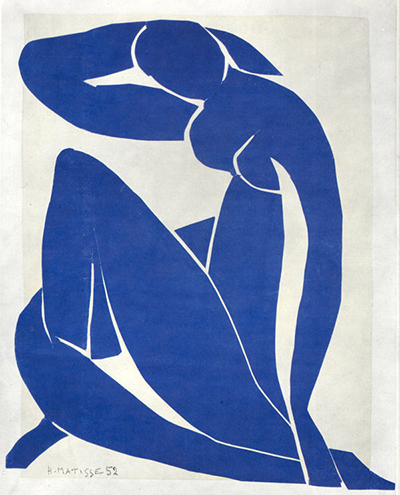 Buy Art Prints Now
Buy Art Prints Nowfrom Amazon
* As an Amazon Associate, and partner with Google Adsense and Ezoic, I earn from qualifying purchases.
Blue Nude II is one of Matisse's most famous cut-outs, completed in 1952 and now found at the Pompidou Centre in Paris. The artist made use of gouache-painted paper and then cut shapes out from which he would form these artworks.
The complete Blue Nude series from Matisse can be considered amongst the most famous set of artworks from this period in European art and clearly ranks amongst the highlights from his overall career. Blue Nude II is merely an iteration, a single flourish, of this collection of work. But it does remains amongst the best known from a group of cut-out artworks, paintings, murals and drawings which totalled in the hundreds. The artist put considerable effort into preparing his figurative work prior to cutting out shapes from painted paper.
The Pompidou Centre in Paris is a fine art institution, well worthy of a visit if you find yourself in that stunning city with some free time. This location was opened in 1977 and has featured a whole plethora of famous names in exhibitions ever since it first opened. They also hold an excellent permanent collection which focuses on drawing, painting, sculpture and architecture. It is very much a forward-thinking location where modern art is given room to express itself. The Pompidou Centre has since gone on to establish further branches internationally which is an ideal method of ensuring that as many parts of their large collection is on display at any one time.
There are, frankly, far too many famous artists featured to name them all here, but some of the highlights, alongside Matisse, include Georges Braque, Robert Delaunay, Fernand Léger, Wassily Kandinsky, Francis Bacon, Mark Rothko, Yves Klein, Jasper Johns, Robert Rauschenberg, Bill Viola, Alberto Giacometti and Jean Dubuffet.




